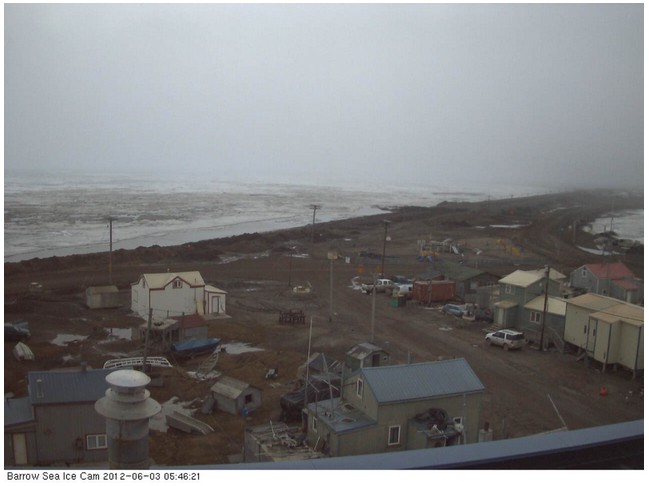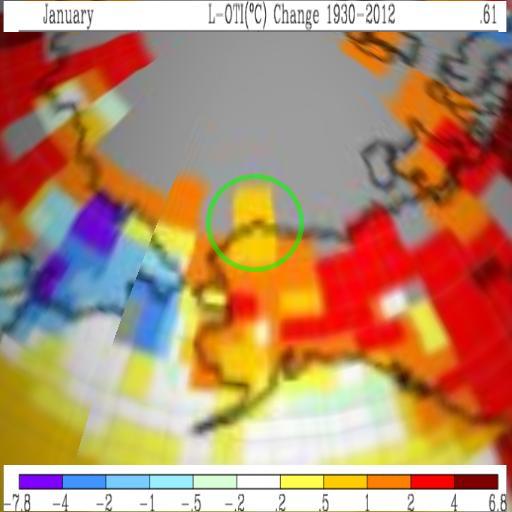The ice offshore at Barrow is covered with dirt which has blown off the roads. This causes the ice to melt much faster.
UHI has caused more than 2C winter warming in Barrow.
THE URBAN HEAT ISLAND IN WINTER AT BARROW, ALASKA
During winter (December 2001–March 2002), the urban area averaged 2.2 °C warmer than the hinterland. The strength of the UHI increased as the wind velocity decreased, reaching an average value of 3.2 °C under calm (<2 m s?1 ) conditions and maximum single-day magnitude of 6 °C. UHI magnitude generally increased with decreasing air temperature in winter, re?ecting the input of anthropogenic heat to maintain interior building temperatures. On a daily basis, the UHI reached its peak intensity in the late evening and early morning. There was a strong positive relation between monthly UHI magnitude and natural gas production/use. Integrated over the period September–May, there was a 9% reduction in accumulated freezing degree days in the urban area. The evidence suggests that urbanization has contributed to early snowmelt in the village.
www.cas.umt.edu/geography/documents/Hinkel_etal_2003_winter_UHI.pdf
Hansen tells us that January temperatures in Barrow have warmed half a degree since 1930, which means that an honest reporting would be about 1.5C cooling in Alaska over the last 80 years.



